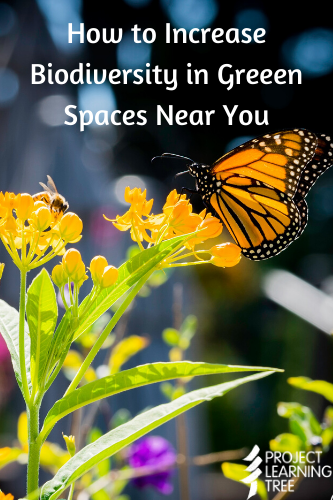
Biodiversity is not only what makes Earth so extraordinary and beautiful; it’s also the reason that life continues to exist on this planet.
Biodiversity is a broad term that refers to the great variety of life on Earth. It encompasses genetic variation, as well as individual species, communities of species, and entire ecosystems. In an economic sense, we rely on biodiversity for the natural resources we consume and the resources that support many jobs and livelihoods.
Unfortunately, extinction rates and biodiversity loss are increasing. And there is no reversing the loss of a species. This is why biodiversity is such an important topic for students to learn about and for everyone to support. The more your students appreciate the importance of diverse plant and animal life, the more likely they are to respect and conserve nature into adulthood.
Though a complex topic, there are many straightforward approaches to help increase biodiversity in your local ecosystem. Here are a few ways you and your students can increase biodiversity in green spaces near your school and homes. Try experimenting with any number of these activities and start observing changes in your environment in as little as a few weeks!
Understand Which Species are At-Risk
Do your students understand the difference between endangered, threatened, and rare species?
To understand the importance of biodiversity, it can be helpful for youth to learn about which species are in abundance versus those that are living “Life on the Edge.” Download the free student pages that accompany the activity of the same name (from PLT’s Explore Your Environment: K-8 Activity Guide) to help youth research and learn why the loss of different animals and plants can negatively affect other species and create a biodiversity crisis.
Access more student pages, STEM strategies, reading connections, tips and facts by logging in to www.plt.org/myk8guide!
Feed the Birds
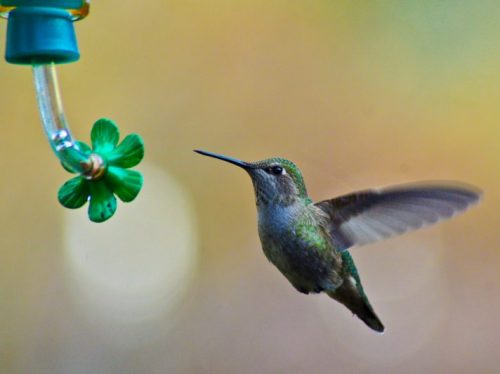
Birds can help to keep an ecosystem in balance by providing a food source for predators and controlling the populations of the many insects they eat. They help with plant reproduction through pollination, dispersing seeds after they are digested, and leaving the droppings in new locations.
Like other plants and animals, after they die, birds provide nutrients for scavengers and decomposers. They are also home to parasites like lice, flies, and mites that can prompt the birds to evolve.
In fact, a study of birds in North America found that species more prone to parasites also tend to be more colorful, leading researchers to consider that showier birds may demonstrate the ability to resist infection. Unfortunately, in the last 50 years, North America has lost more than one-fourth of its entire bird population.
Putting out a bird feeder is such an easy way to bring a wide variety of birds to your classroom observations. Popular seeds like black-oil sunflower seeds can lure blue jays, cardinals, chickadees, sparrows, and more.
Some important tips on bird feeders:
- Visit Cornell’s Project FeederWatch for more information on common species that frequent bird feeders and filter for geographic region and preferred food types.
- Make sure that you’re cleaning all bird feeders regularly and limiting the number of feeders in an area (space them appropriately) to prevent disease outbreaks among visiting birds.
- Some smaller birds may be preyed upon by larger raptors, so you might need to explain this natural process to observing students. PLT’s “Web of Life” activity taken from the new Explore Your Environment: K-8 Activity Guide can support this conversation by examining the importance of biodiversity and the interdependence of organisms. Younger students can learn more by downloading our free family activity (available in English and en Español), while older students will enjoy examining STEM strategies that support this lesson.
- You can sign your class up for Project FeederWatch’s citizen science program and report the number of birds you see from November to April to contribute to citizen science observations!
- Use a free app like Merlin, WildLab Bird, or iBird Lite to identify bird species using audio, pictures, and maps.
Create Shelter for Birds, Bats, and Other Pollinators
Pollinators like birds, bats, bees, and butterflies are critical to the survival of many plant species and the food you eat. Setting them up with housing is a great way to help their declining numbers.
Bird Houses
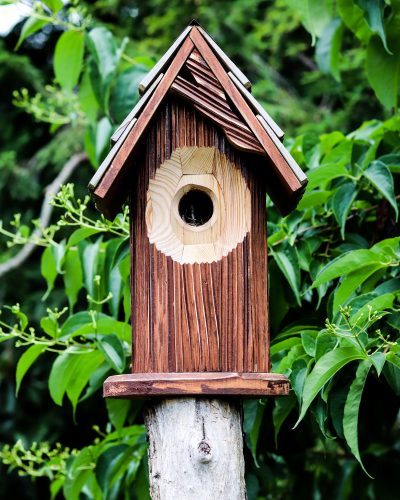
Do the youth you work with understand the important relationship between birds and trees?
From their leafy branches to their tangled roots, trees provide habitat for a great diversity of birds. In this free family activity adapted from PLT’s new Explore Your Environment: K-8 Activity Guide, Kindergarten-Grade 2 children will inventory the plants and animals that live in, on, and around trees and discover how plants and animals depend on trees in many ways.
Nesting boxes are a great (and easy!) way to observe bird activity over time. In addition, these boxes can attract many bird species to increase the diversity in your outdoor area. Common varieties that use bird houses include bluebirds, wrens, titmice, and chickadees.
Convert your students into citizen scientists by enrolling in Cornell’s NestWatch program. Through the website, you can find which bird populations are declining in your area, as well as what type of housing they prefer. You’ll also find information from NestWatch on the best ways to build a bird house, the ideal time and placements for setup, and how to install a nestbox trail camera for close-up observations.
Once you set up the house, you can record what you see every 3-4 days, then submit data to help researchers stay informed of trends like how bird populations may be changing due to climate change, habitat loss, and more. Use their website as a resource to build your bird house if your students can’t commit to reporting every 3-4 days.
If you’re lucky, a visiting bird family may even be featured in a school newsletter and raise celebrity-like awareness of your class’s preservation efforts.
Bat Houses
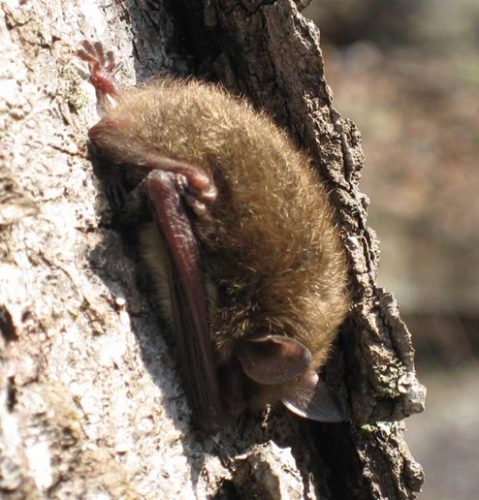
Besides assisting with the pollination of hundreds of different plant species, bats also eat enough insects to total their own body weight on a typical night. Bats can eat more than 1,000 mosquitos in just one hour. Just imagine how many more bug bites you’d be scratching without them! Their love of an insect-filled diet also reduces the need for pesticides on the crops we eat. Bats may have a scary reputation, but they add a lot of value to the environment.
You can help bats that struggle with White-Nose Syndrome disease and habitat loss by building and installing a bat house at your school site. Learn all about how to set up a bat house and what to look out for with this resource from Bat Conservation International.
For further inspiration, read about how children ages 7-12 from a Clark County, Ohio after-school program installed bat houses in a local prairie and wetland.
Bats are important year-round, but the week of Halloween is their time to shine! Learn more about Bat Week, an annual celebration of these important mammals, and share our bat facts, activities, arts and crafts projects, and writing prompts with your students to inspire bat conservation.
Houses for Other Native Pollinators
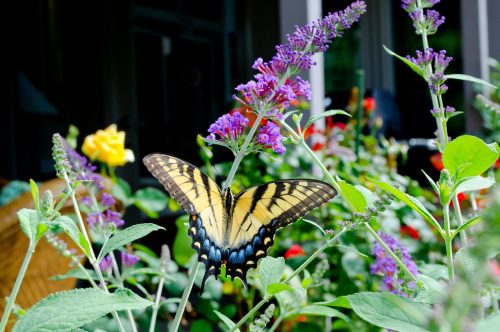
Bees and butterflies are major pollinators. They also could both use a little help as their numbers are in decline. Get some more valuable practice with STEM skills by building one of the many different kinds of native pollinator houses out there.
Consider adding a butterfly house in your pollinator garden or school site. Also, check out how students created gardens specifically for butterfly nourishment in this PLT blog.
Encourage native cavity-nesting bees to nest at your site with a bee house that has tunnels and chambers perfect for laying and incubating eggs. Unfortunately, many bee houses sold in stores can actually do more harm than good. Be sure to do some research on the types of bees that live in your area and their nesting habits and check out things to avoid when selecting a bee house. Better yet, create your own bee house!
Plant Native and/or Pollinator-friendly Plants
Planting native plants in your green space may be the best way to aid the ecosystem’s healthy biodiversity. Over 80 percent of the contiguous U.S. is privately owned, so important for everyone to get behind native planting.
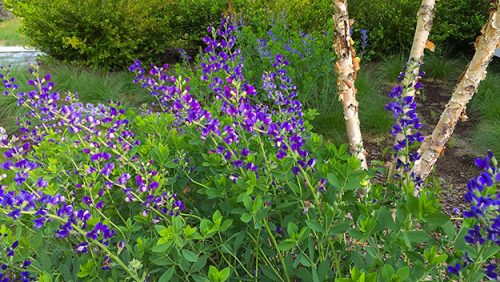
Even just a modest amount of native plants in an area provide far better food, shelter, and nesting for local wildlife than any kind of non-native plant can. This is mainly because these plants evolved with the animals around them. Most types of butterflies like monarchs and swallowtails, other pollinators, and many mammals and insects depend on very specific native plant varieties for their sustenance.
Get your class involved with starting and maintaining a school garden with plants native to your area, but first, check out what these Project Learning Tree classrooms did with their pollinator-focused gardens for inspiration.
Trees count, too. Planting native trees go a long way in supporting an environment. To illustrate how big of a difference a native tree can make, an oak tree can support 537 different species of insects, while a Gingko tree (which is a popular variety for landscaping and urban planning) only supports three! Plant a tree (or three) as a class, or volunteer with a local organization or nature center near you to assist with planting, maintaining, or distributing trees.
If you have less space, consider a smaller project like planting native flowers in pots that sit on your class’s windowsill so they can still learn about protecting pollinators. You might also consider joining a local community gardening effort or even starting one of your own for an ambitious yet highly rewarding experience.
Be sure to avoid using pesticides in your gardens since they are extremely harmful to pollinators and native insect populations. Instead, add compost to your garden, which will encourage worms and other micro-organisms–as well as your plants–to thrive.
Some helpful resources to get started:
- Project Learning Tree’s GreenSchools online workshop will show leaders how to empower students to use STEM by conducting a native plant project of their own design.
- National Wildlife Federation’s Native Plant finder
- The U.S. Department of Agriculture’s Noxious Weed (or invasive plant) list
- Xerces Society’s pollinator-specific list of native plants
- Read more about the benefits of native plants in this blog, where you will also find other interactive activities for your class to explore them
Add Water to Your Garden or Green Space
Make it a rain or bioswale garden
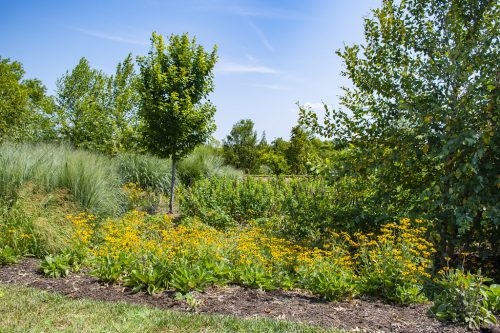 Rain gardens have a dip in the ground where rain runoff from roads, lawns, and sidewalks can collect. They are excellent for promoting biodiversity since they remove pollutants from water before it flows directly into lakes, rivers, and wetlands. They attract plenty of birds, butterflies, and insects and require little maintenance. Visit this page to discover more on why and how to build a rain garden.
Rain gardens have a dip in the ground where rain runoff from roads, lawns, and sidewalks can collect. They are excellent for promoting biodiversity since they remove pollutants from water before it flows directly into lakes, rivers, and wetlands. They attract plenty of birds, butterflies, and insects and require little maintenance. Visit this page to discover more on why and how to build a rain garden.
Similar to rain gardens, bioswales also collect stormwater runoff and are typically designed to curve around natural drainage channels. When enhanced with native plant life around the channels, bioswales become even more effective at filtering out contaminants.
Rain and bioswale gardens offer brilliant opportunities to use soft engineering skills, and they keep wildlife away from streets where they can be injured.
Add water sources for birds, bees, and butterflies
Your class bird bath is sure to become very popular among the locals. Just be sure to change the water in your birdbath often and keep it filled and clean.
You can also create a shallow bee and butterfly water source. The most important part is to have a place for the bees and butterflies to land while they drink water. To do this, add rocks or marbles to a shallow dish, making sure the water line is lower than the rocks.
Additional Helpful Resources
As you observe the diverse plant and animal life that your green space attracts:
- Look at PLT’s tips and ideas for documenting your findings in a nature journal. When drawing and writing about native plants and animals, students will combine art, science, and language arts to make learning about biodiversity memorable.
- Supplement your project(s) with this PLT module that teaches high schoolers about the broader concepts and connections within a biodiverse world.
- Introduce students in grades 3-5 to the complexities of biodiversity in a hands-on way that will hone their critical thinking skills with PLT’s new Biodiversity Blitz Activity Collection.
There are so many creative ways that students of all ages can promote biodiversity in their area. Let us know how you plan to participate in the comments below!


